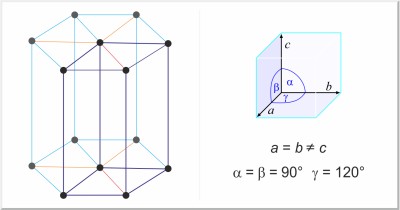HOLMIUM
TRANSITION ELEMENT: LANTHANIDE
| Atomic number: | 67 |
| Group numbers: | 3 |
| Period: | 6 |
| Electronic configuration: | [Xe] 4f11 6s2 |
| Formal oxidation number: | +3 |
| Electronegativities: | 1.23 |
| Atomic radius / pm: | 174.3 |
| Relative atomic mass: | 164.930 33(2) |
Holmium was discovered by Per Theodore Cleve (SE) in 1879. The origin of the name comes from the Greek word Holmia meaning Stockholm. It is a fairly soft, malleable, lustrous, silvery metal that reacts slowly with oxygen and water. Holmium dissolves in acids and is able to react violently with air or halogens. Holmium occurs in gadolinite but most often it's produced from monazite sand. It has very few practical applications; however, it has some unusual magnetic properties that offer some hope for future applications. The price of 99.9 % pure holmium pieces is 348.50 € for 25 g.
| Density / g dm-3: | 8795 | (298 K) |
| Molar volume / cm3mol-1: | 18.75 | (298 K) |
| Electrical resistivity / µΩcm: | 87 | (20 °C) |
| Thermal conductivity / W m-1K-1: | 16.2 |
| Melting point / °C: | 1474 |
| Boiling point / °C: | 2700 |
| Heat of fusion / kJ mol-1: | 17.2 |
| Heat of vaporization / kJ mol-1: | 303 |
| Heat of atomization / kJ mol-1: | 302.63 |
| First ionization energy / kJ mol-1: | 580.99 |
| Second ionization energy / kJ mol-1: | 1138.54 |
| Third ionization energy / kJ mol-1: | 2203.74 |
| in the atmosphere / ppm: | - |
| in the Earth's crust / ppm: | 0.78 |
| in the oceans / ppm: | 0.00000008 |
| Crystal structure: | hexagonal |
| Unit-cell dimensions / pm: | a=357.73, c=561.58 |
| Space group: | P63/mmc |

| Isotope | Relative atomic mass | Mass percent (%) |
|---|---|---|
| 165Ho | 164.930319(3) | 100 |
| Balanced half-reaction | Eo / V | |
|---|---|---|
| 66 Dysprosium | ← | 67 Holmium | → | 68 Erbium |
Citing this page:
Generalic, Eni. "Holmium." EniG. Periodic Table of the Elements. KTF-Split, 13 Feb. 2025. Web. {Date of access}. <https://www.periodni.com/ho.html>.
Articles and tables
- Periodic table
- Online calculators
- Scientific calculator for chemists
- Gas laws calculator
- Molar mass calculator
- Angle converter
- Roman numerals converter
- Number systems converter
- Preparation of solutions
- Labeling of chemical containers
- Oxidation numbers calculator
- ARS method
- Oxidation number change method
- Ion-electron method
- Gauss elimination method
- Memory game
- Find the pairs
- Articles and tables
- Chemistry
- List of abbreviations and acronyms
- Crystal systems and Bravais lattices
- GHS - Hazard pictograms
- NFPA 704 Hazard Diamond
- Fundamental physical constants
- Solubility product constants
- SI - International System of Units
- Composition of mixtures and solutions
- Stoichiometric calculations
- Chlorinity and salinity of seawater
- Rare earth elements (REE)
- Ecology
- Web design
- Chemistry dictionary
- Chemistry
- Downloads
- ≡ Menu
